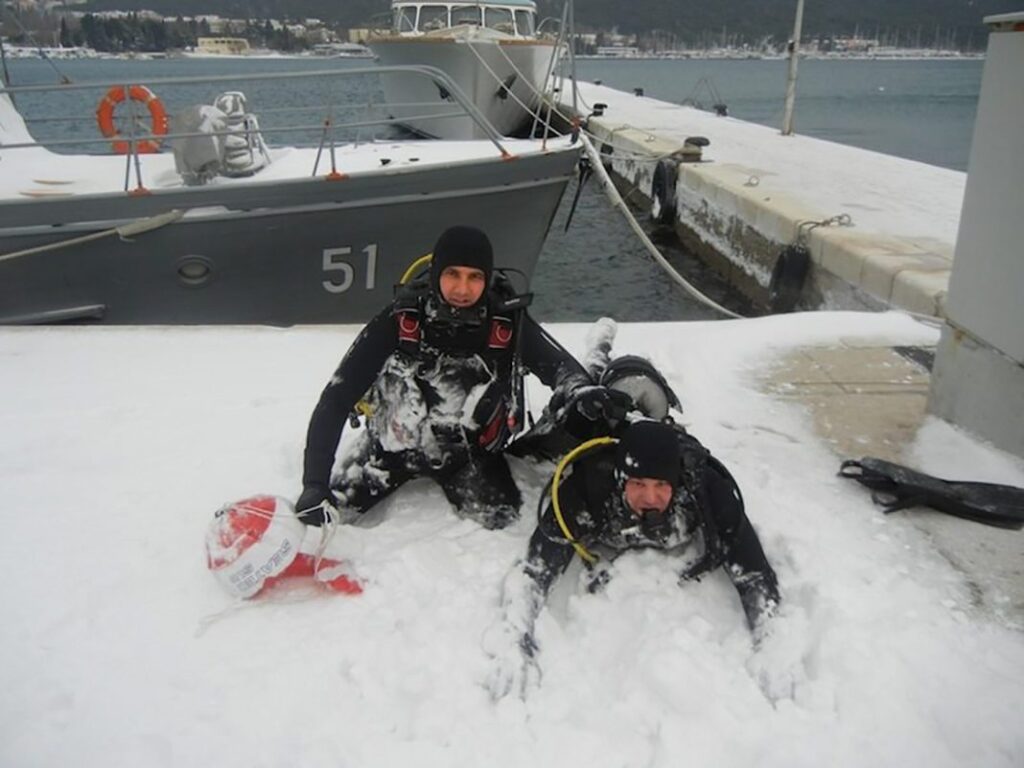The Effects of Cold on Divers
The Significance of Body Temperature
Hypothermia, or the decrease in body temperature, occurs when the core temperature drops below the standard 36–37 degrees Celsius. Maintaining a stable body temperature is crucial for mammals and humans alike. The human body has intricate mechanisms for thermoregulation, ensuring that large fluctuations in temperature don’t harm vital organs. Unlike some animals, humans do not hibernate, which underscores the importance of this balance. To adapt to various climatic conditions, we rely on protective clothing. For instance, during scorching heat, we seek shade and wear light clothing. Similarly, divers adjust their gear based on factors like water depth, location, and duration.
The Physics of Heat Exchange
The principles of thermodynamics play a significant role in understanding how the body loses heat. When bodies of different temperatures come into contact, heat transfer aims to equalize them. Interestingly, water conducts heat from the body approximately 26 to 30 times faster than air. If a diver emerges from the water and is exposed to cold winds, the risk of hypothermia intensifies. Even in warm seas during the summer, the potential for hypothermia exists. Conversely, extended exposure to extreme heat without proper adaptation can lead to hyperthermia, posing its set of dangers.
The Body’s Response to Cold
When faced with cold conditions, the body’s blood vessels constrict to minimize heat loss, especially from extremities like hands and feet. This narrowing ensures that warmth is retained around vital organs, even as the skin feels colder. An immediate physiological response to cold is shivering—a natural mechanism to generate heat. However, when the body’s energy reserves deplete, shivering ceases, leading to severe physiological changes. These alterations can affect heart rate and breathing and even lead to fatal outcomes like cardiac arrest.
Diving in Variable Temperatures
The temperature of seawater fluctuates depending on various factors, such as geography, seasons, and atmospheric conditions. Divers are influenced by factors like the type of diving, the gear they use, and their level of experience. For instance, using specific gas mixtures like helium can help warm divers during deep dives. However, if these mixtures are not appropriately warmed, it can lead to breathing difficulties and chest pains resembling a heart attack. Another acute risk in cold waters is the potential for laryngospasm, where sudden contact with cold water can cause the vocal cords to spasm, leading to unconsciousness.
Grades of Hypothermia
Hypothermia is classified based on its severity. Mild hypothermia occurs when the body temperature ranges between 35-33 degrees Celsius. Symptoms include narrowed blood vessels, increased urination leading to dehydration, and impaired dexterity. As the condition progresses to moderate hypothermia (33-30 degrees Celsius), risks escalate. Muscle stiffness, an irregular heartbeat, metabolic changes, and shallow breathing characterize this stage. Severe hypothermia, with temperatures below 30 degrees Celsius, presents the gravest risks, including unconsciousness and potential death.
Emergency Responses and Precautions
Prevention remains the best strategy against hypothermia. Proper physical conditioning, acclimatization, and selecting the right diving attire for prevailing conditions can significantly mitigate risks. In emergency scenarios, immediately removing the diver from the water and initiating passive warming methods are crucial. It’s essential to avoid abrupt movements that can further shock the system. Medical interventions, like external heart massage and using automated external defibrillators, can be life-saving. However, it’s crucial to understand that certain treatments are ineffective until the diver’s core temperature is stabilized.
Safety Measures for Divers
While diving offers a mesmerizing experience, understanding and respecting the challenges of underwater environments is paramount. Hypothermia stands as a significant risk, but with proper knowledge, training, and equipment, divers can ensure their safety. Regular training sessions, awareness campaigns, and advancements in diving technology further enhance the community’s preparedness. As diving continues to evolve as a sport and profession, equipping oneself with knowledge about potential risks like hypothermia remains crucial for a safe and fulfilling experience.
Thanks for reading, check out the new Fourth Element Arctic Undergarment.

Pingback: Fourth Element Arctic Undergarment: A Dive into Innovation - Scuba Diving Corner